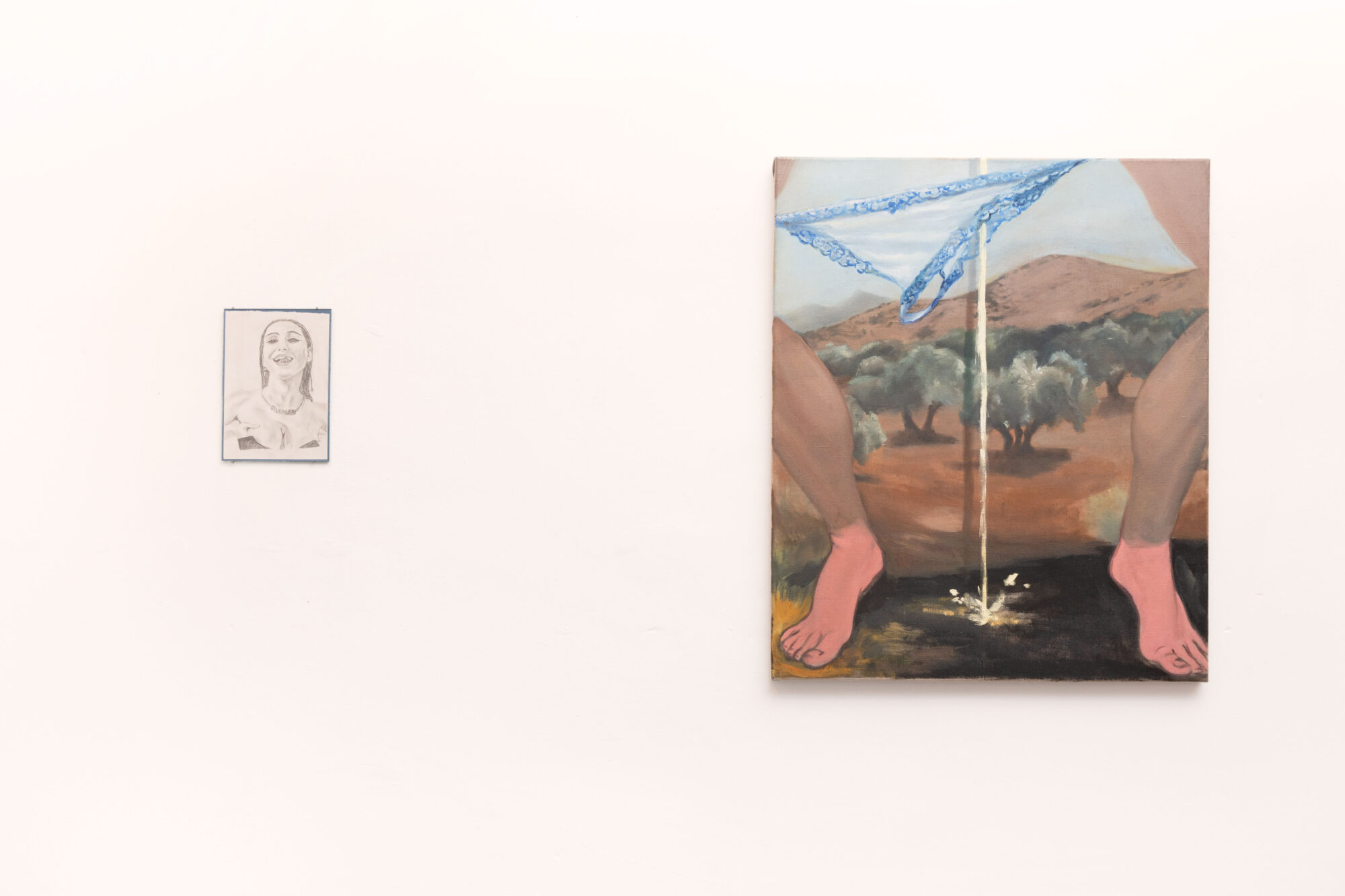
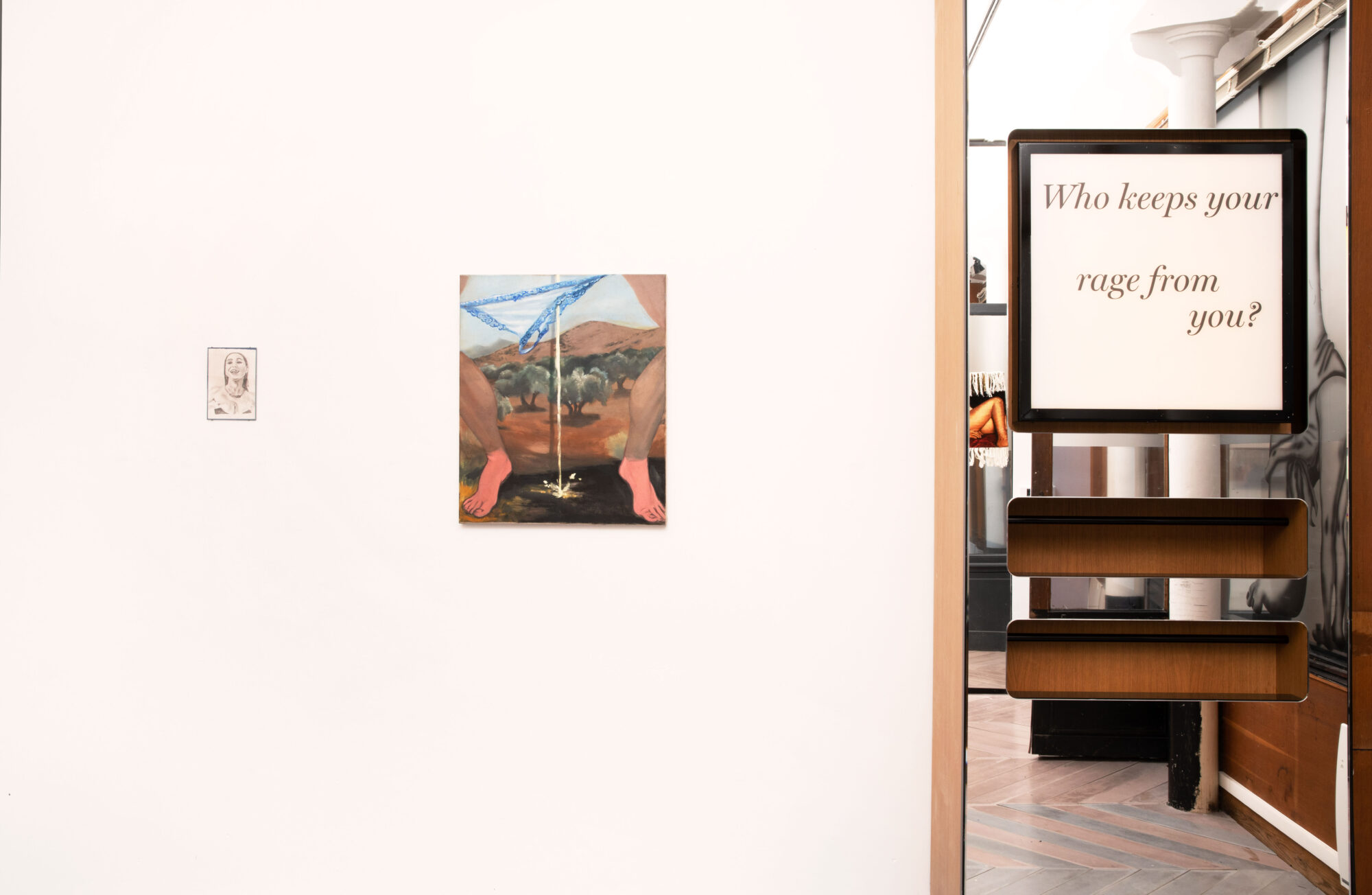
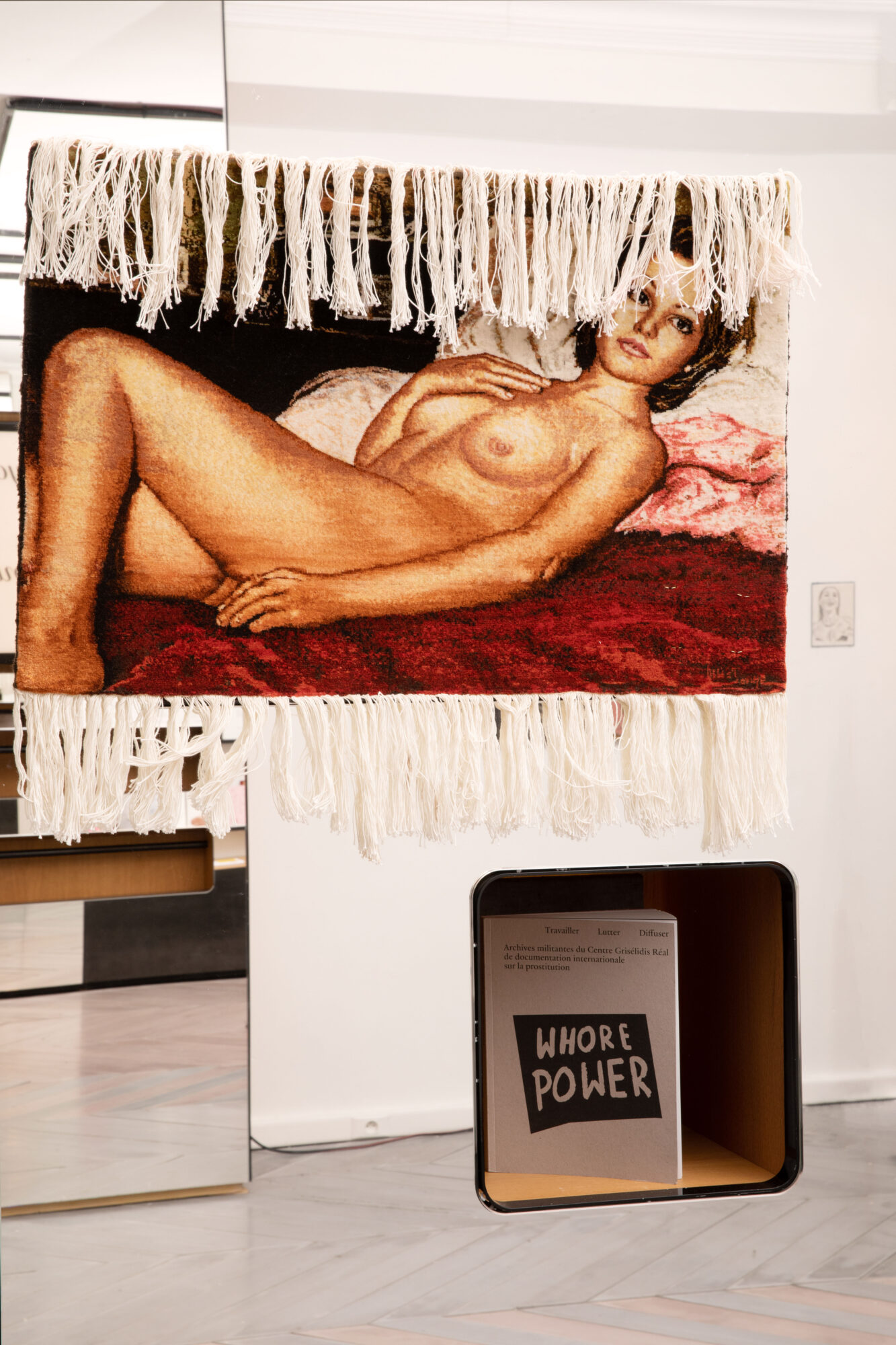
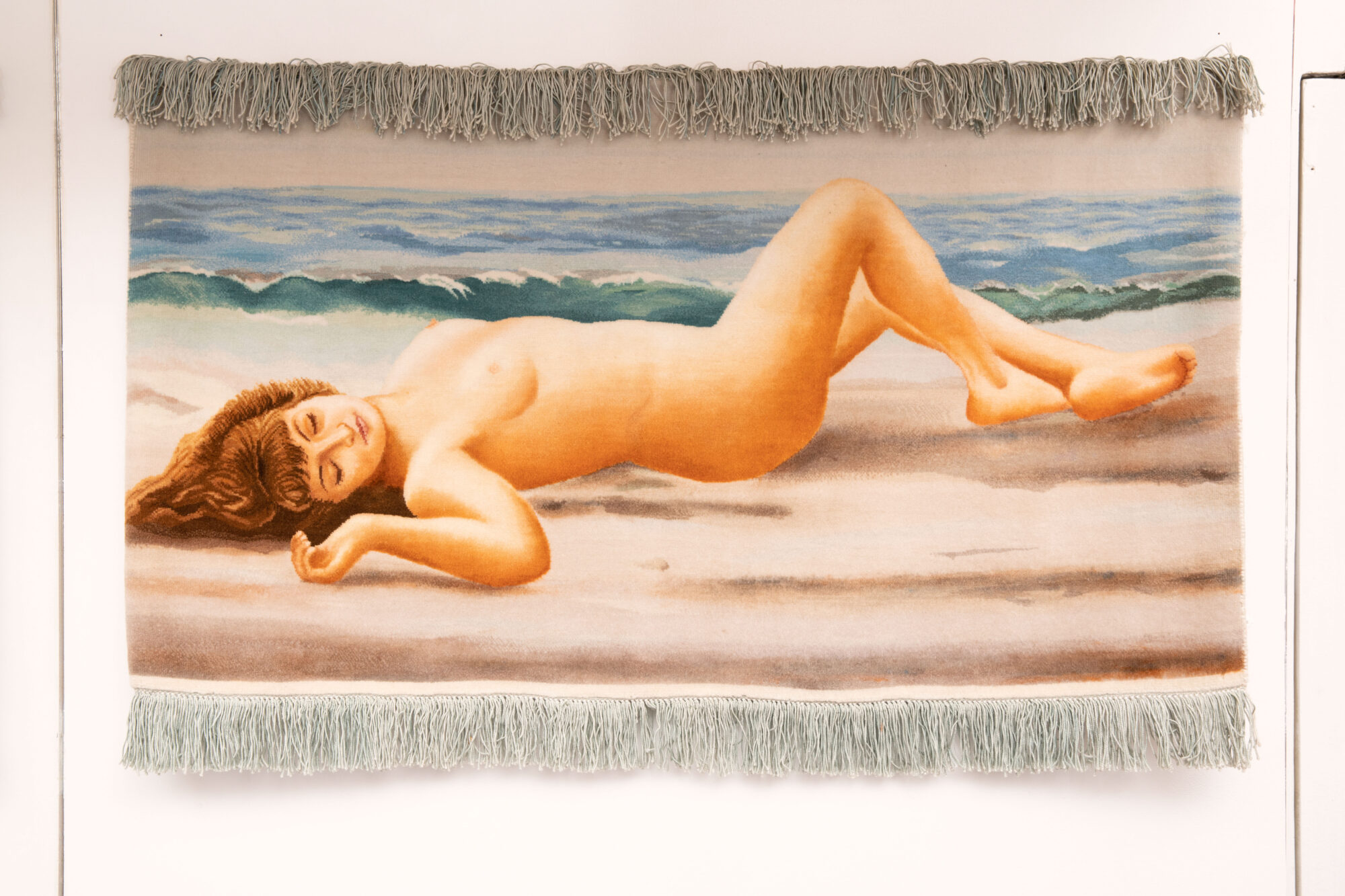
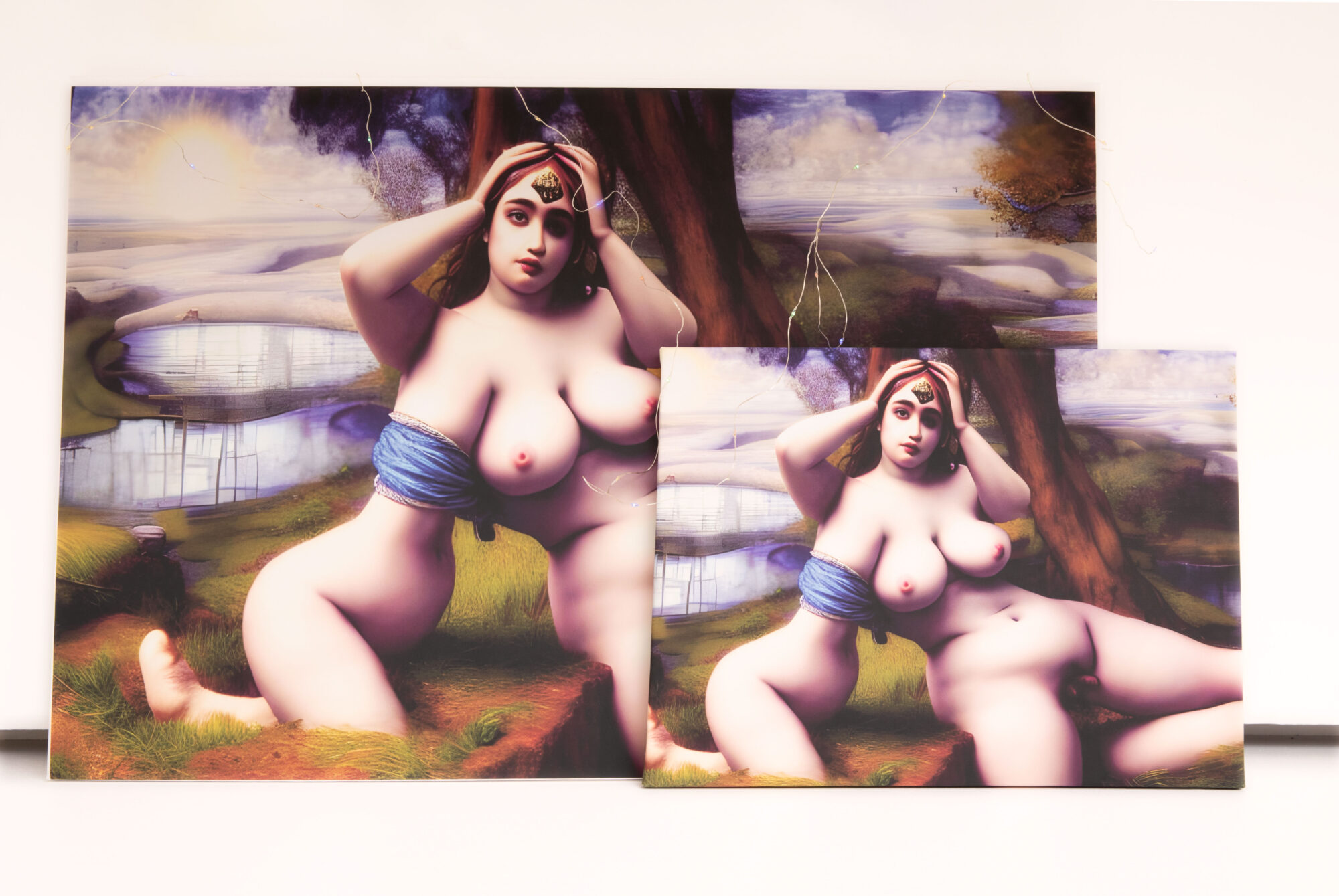
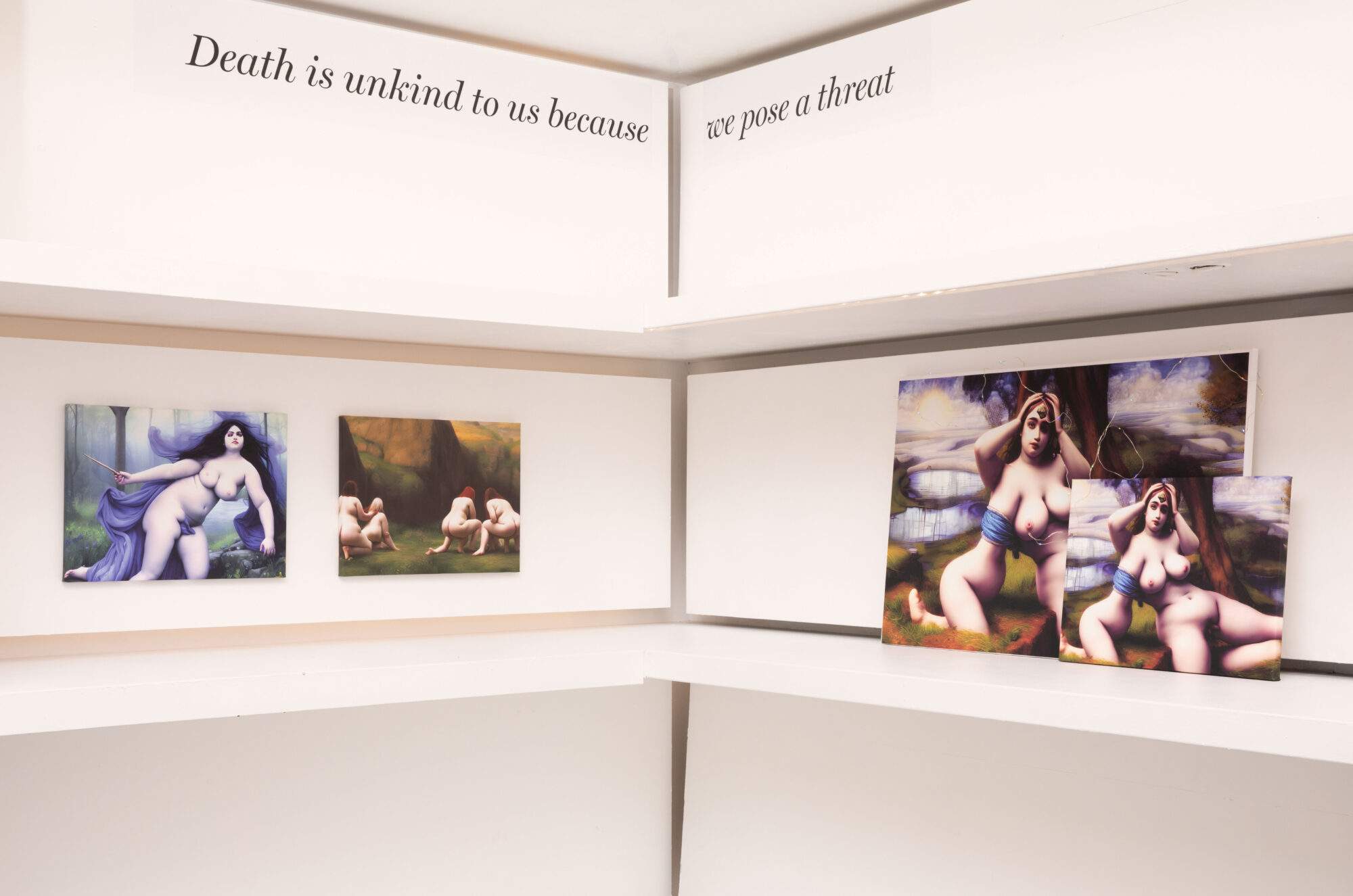
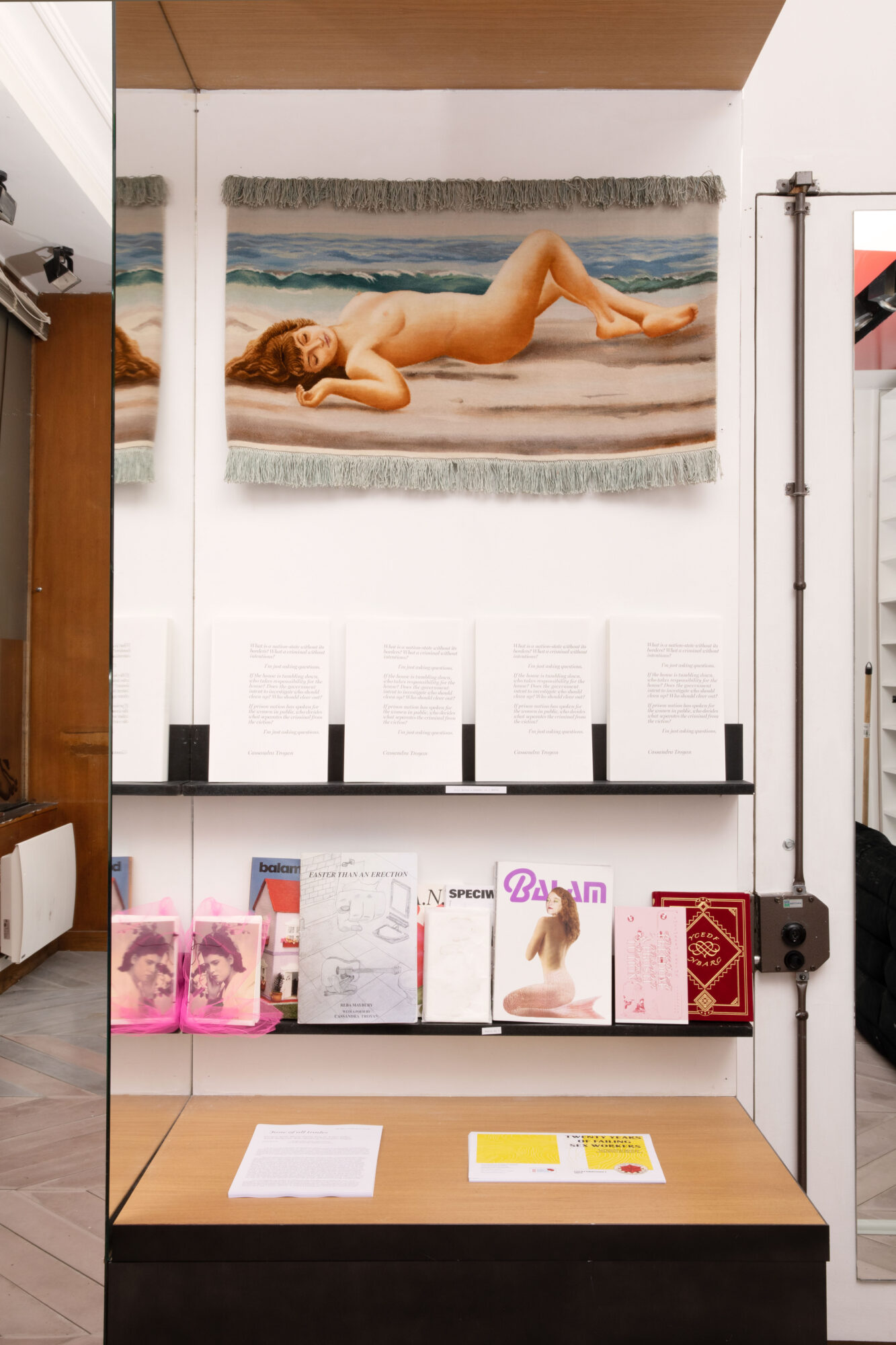
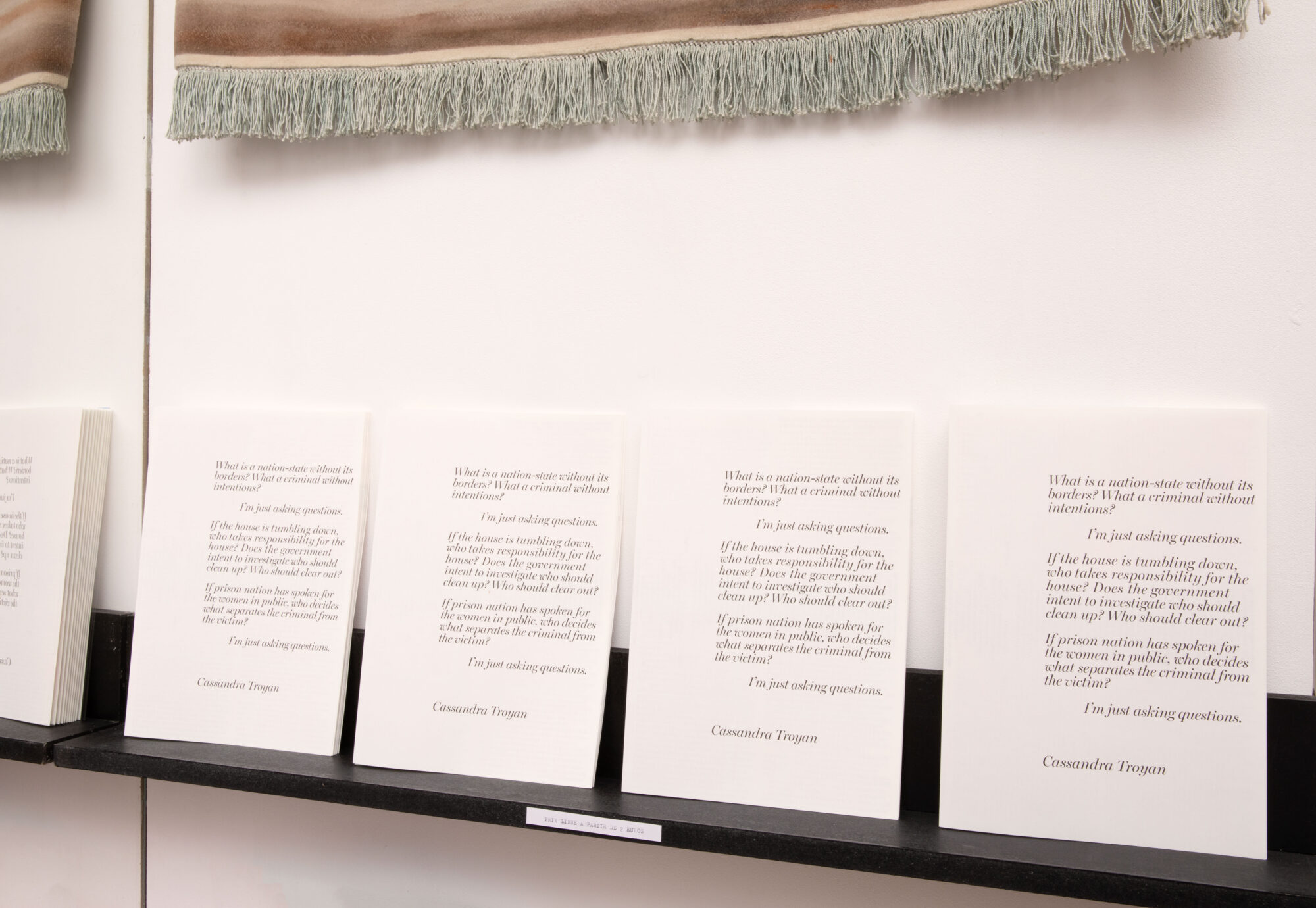
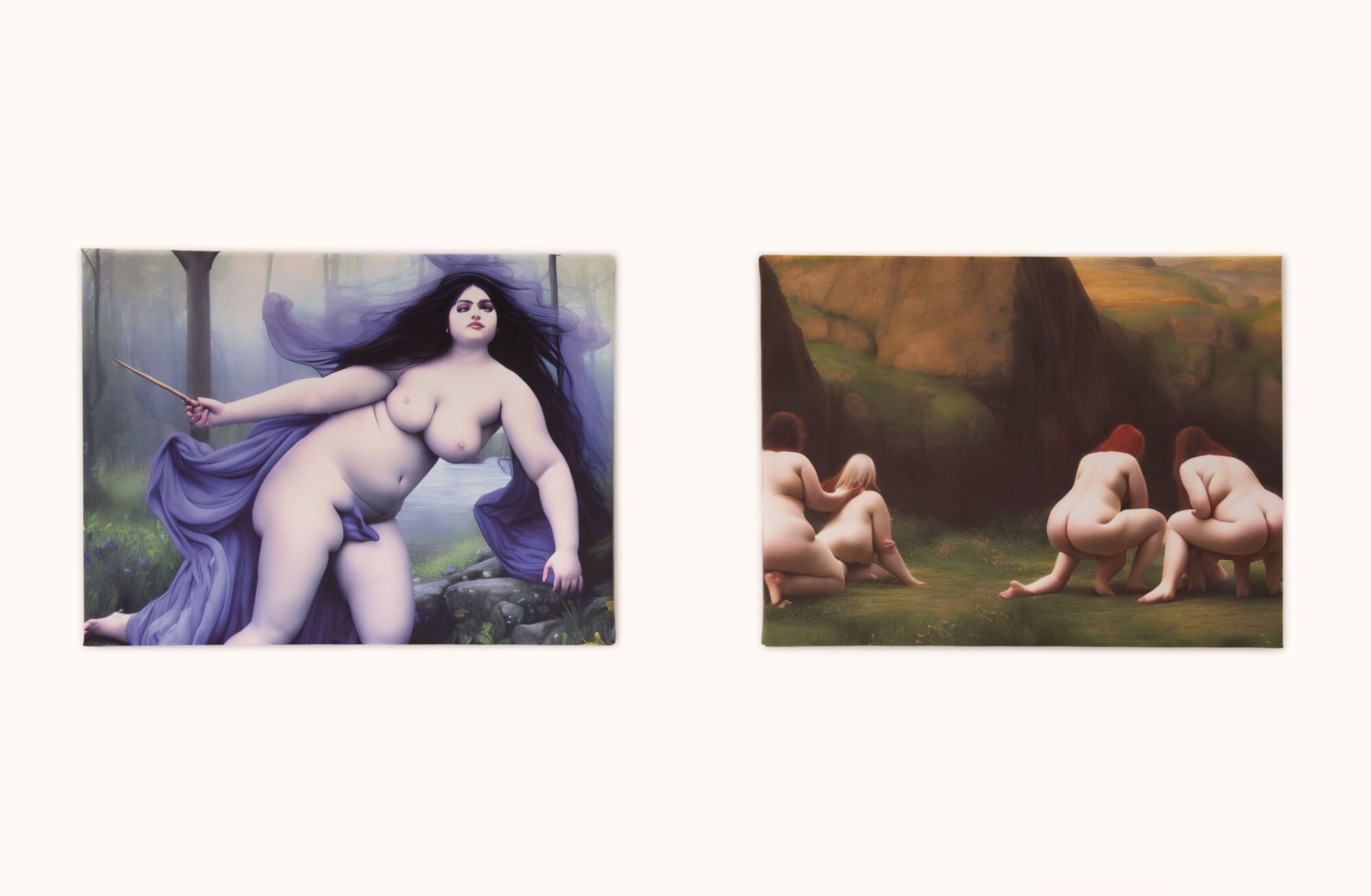
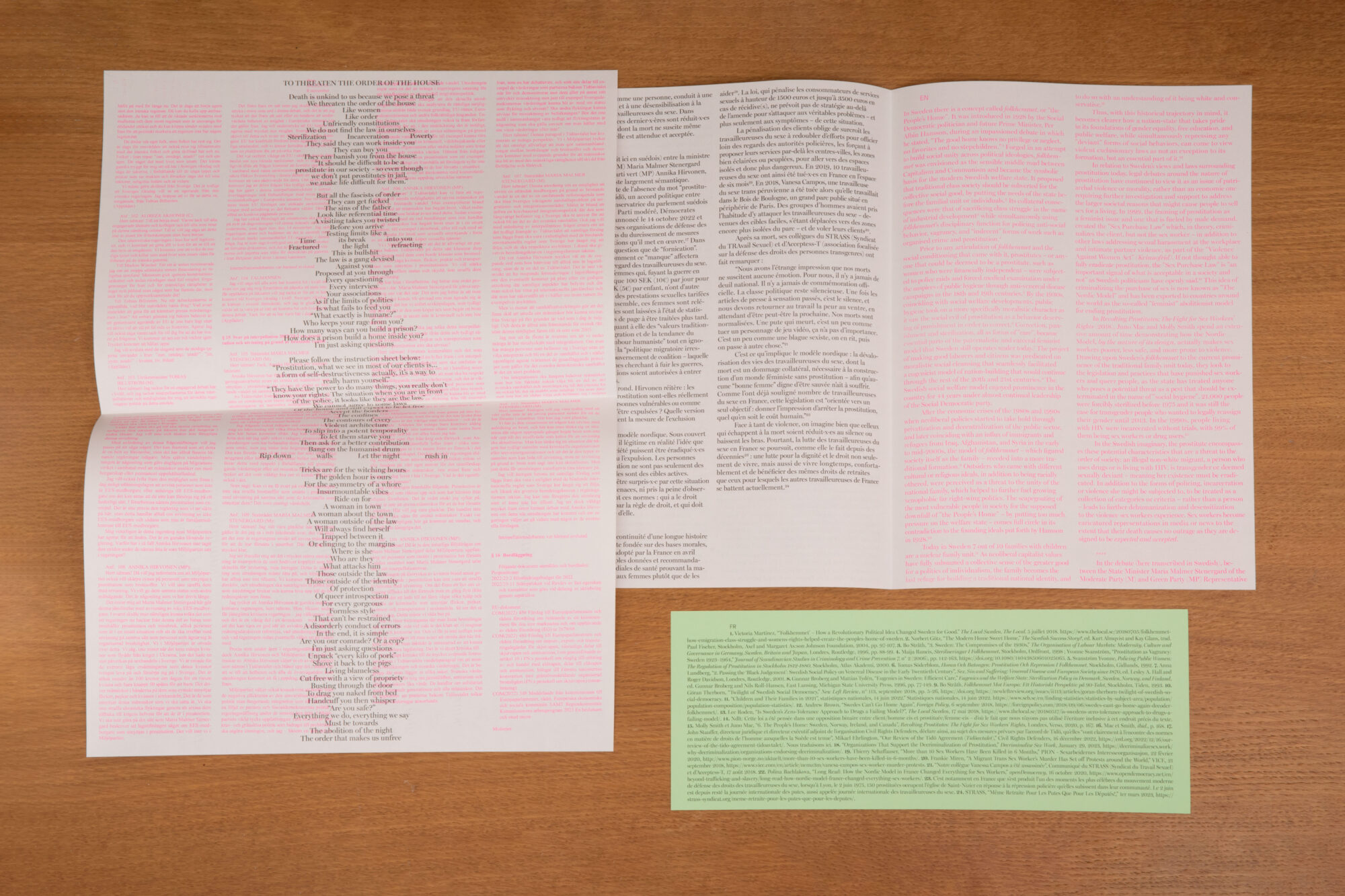










Information
Shmorévaz invites RING art space for ‘Jane of all trades’, the second part of an exhibition presented in Stockholm last December.
On the walls of the store, three tapestries, made from photographs representing naked women, languishing in different settings: a domestic interior reminiscent of the hangings of Olympia1, a green meadow, a stretch of sand bordering the ocean. There is no information on the origin of the photographs, let alone the identity of the models. All that is known is that they were made in Iran before the 1979 Revolution and it is assumed that they are part of the flurry of objects put into circulation following the passage of the Swedish law of 1971, allowing the dissemination of pornographic representations in public spaces.
These three tapestries were shown last December at RING, a young independent art space cohabiting with this Persian rug store in the Södermalm district of Stockholm. Left voluntarily on the wall, they were part of an exhibition entitled ‘ANd now she walks on out/ E Uscita’ gathering a choir of artists who came to rethink the history of these visual dispossessions. Some of the works were deemed obscene and scandalized the owner, who demanded that the exhibition be taken down early. This gesture of authority was, in subtext, a statement of the ability of certain representations to capture the viewer, whereas others, by dint of being circulated, seem to have cancelled out all critical possibilities. Because one recognizes these odalisques, these views of postcards; one finds them in the canons of the history of the art, the classics of the cinema, the kitsch of manufactured objects. They function as symptoms: those of a visual culture that disseminates fantasized representations, in spite of the bodies that concern them. At the same time, the image immobilizes and anonymizes the model; it supposes and perpetuates a pseudo-passivity of the “muse” in front of those who contemplate her. Underneath these elongated silhouettes, stretched out like mute invitations, we should perhaps see something else; we should hear this feeling that stirs from the cave that some bodies have created in their belly: violence. The one that is like oil, a substrate of decomposed memory, of dead flesh. It seeps through the skin and, because it is already death upon death upon death, it causes the decomposition of our own contours. Our capacity to love. Another view should be captured: women, static, while this tornado, as old as the world, seeps into them.
How to look at these images, which continue to be all around and inside us? How do we deal with this iconographic heritage and reappropriate it? How to negotiate with it? It is about these transactional dynamics that Jane of all trades wishes to discuss. The title hijacks the Anglo-Saxon expression “jack of all trades”, and chooses to swap Jack for Jane. Jane is for Jane Doe, the Madame X used by the American administration to designate any unidentified person. Trade2, because behind these images that anonymize bodies, there is a business, a know-how. For each lascivious posture, for each stranger ready to be seized, we find the realities of domestic or reproductive labor, of sex work too.
The exhibition points out the concrete impact of these representations, in the flesh. It brings together 6 artists who question the visual economy of this iconography of sexualized female bodies. Their works question the production, the diffusion, the consumption of these images and propose us ways out : exchanges that bypass the demand, counterfeits without camouflages, bugs of categorization etc. At the same time gravediggers and continuators, these works draw in the erotic to find a critical force, a tactic of subversion. How we infiltrate, how we sabotage, how we contractualize too – are as many forms that this bargaining takes.
With Carmen Ayala Marín, Giulia Essyad, Arthur Gillet, Sarah Margnetti, Reba Maybury & Cassandra Troyan.
Curated by Salomé Burstein & Julie Robiolle.